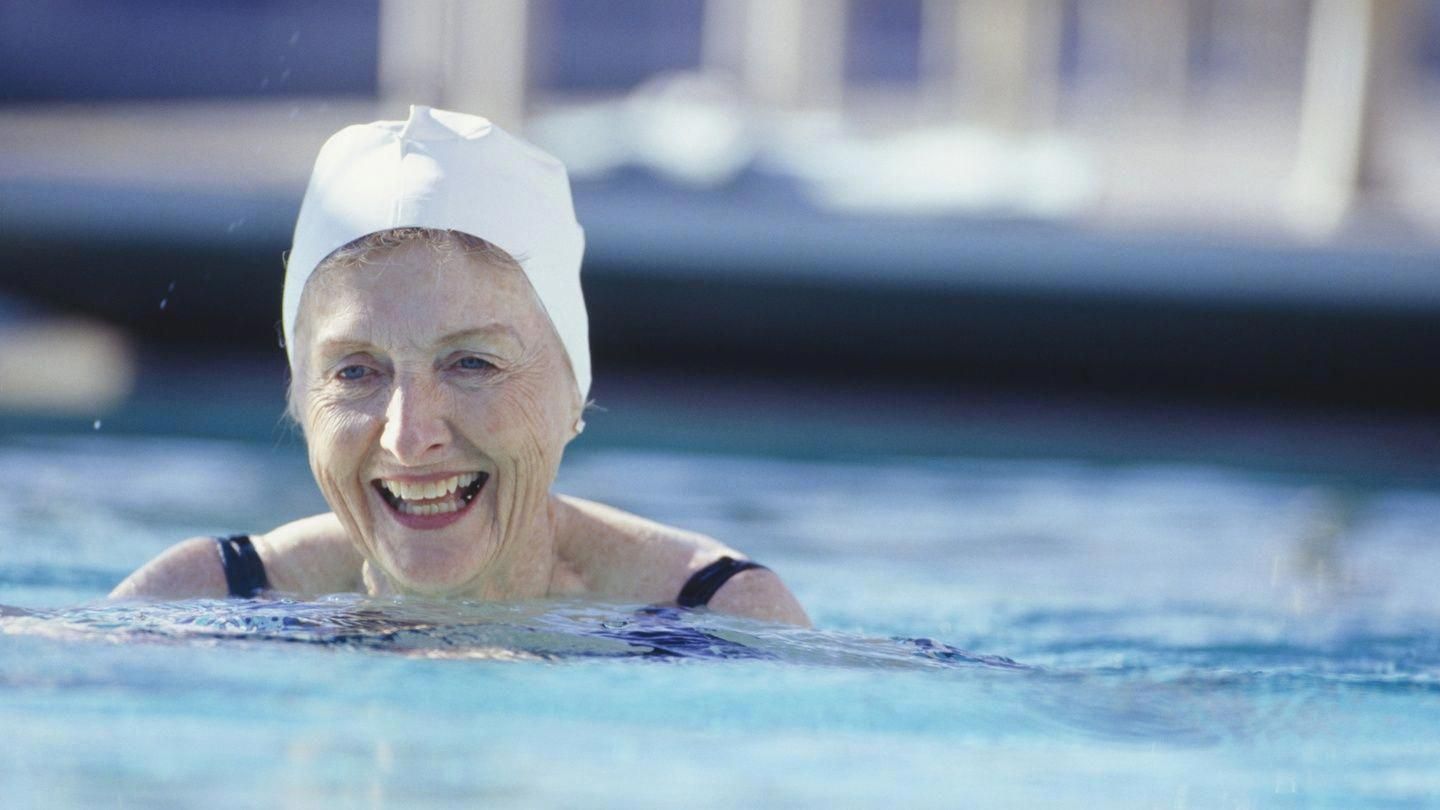Swimming is an amazing cardiovascular workout and bodyweight conditioning tool – no wonder Olympic swimmers are so in shape!
One study demonstrated how high-intensity intermittent swimming improved cardiovascular health among sedentary premenopausal women with mild hypertension by lowering both their systolic blood pressure and resting heart rate.
Benefits of Swimming For Cardiovascular Health
How Swimming Boosts Heart Health
The cardiovascular system is an intricate network of veins, arteries and blood vessels that circulate oxygenated blood to every cell in your body. Exercise that gets your heart beating faster will be extremely beneficial to overall health.
Swimming can bring many health advantages for the cardiovascular system, including increased endurance, better blood circulation and stronger muscles. Swimming’s cardiopulmonary benefits have also been shown in studies published by American Journal of Cardiology and European Journal of Applied Physiology.
An investigation published in 2013 in Evidence-Based Child Health demonstrated that high-intensity swim training significantly enhanced cardiovascular and lung fitness among sedentary premenopausal women with mild hypertension. Swimmers participated by performing six to ten 30-second all-out bouts interspersed with two minutes of recovery between all-out sessions; additionally they swam continuously for one hour at moderate intensity levels.
Swimming helps improve blood circulation by strengthening the muscles that move and stretch the blood vessels, which allows your heart to pump more blood with each beat, thus decreasing your resting heart rate. Swimming is also a low-impact activity suitable for people suffering from arthritis or chronic back pain; its soothing watery environment may even reduce stress – an activity known to contribute to cardiovascular problems.
The Cardiovascular Benefits of Swimming
Your heart pumps blood through your body, providing oxygen and nutrients while eliminating waste products. Because this system requires daily work from its muscles supporting it, regular exercises such as swimming can strengthen these support muscles while also increasing cardiovascular endurance and decreasing blood pressure. According to studies, swimming increases cardiovascular endurance while simultaneously decreasing blood pressure.
Swimming offers many cardio health benefits and recreational swimming is no different; in fact, recreational swimming burns an equivalent number of calories as brisk walking! Furthermore, this low-impact workout may reduce joint pain while making swimming an excellent way for older adults to exercise safely and successfully.
Swimming strengthens the large muscles of your upper body, elevating your heart rate and improving cardiovascular endurance. Furthermore, swimming improves circulation to alleviate symptoms like numbness or tingling in extremities by increasing blood flow to these regions.
Swimming is an effective cardio workout and swimming pools provide convenient ways of keeping fit, but if they don’t fit into your schedule or are too far away then consider purchasing a Michael Phelps Signature Swim Spa as an economical way to bring water directly into your backyard. With adjustable resistance features and comfortable temperature regulation capabilities it makes an excellent way to introduce beginners or advanced swimmers alike into this dynamic form of aquatic exercise.
The Positive Impact of Swimming
Though many don’t think of swimming as a cardiovascular workout, it can actually provide significant cardiovascular health benefits. Swimming engages all three muscle groups simultaneously to pump blood around your body while providing oxygen. Furthermore, it strengthens and stretches out muscles as you build strength and flexibility through aquatic workouts.
Swimming provides benefits beyond cardiovascular fitness; the exercise also improves circulation throughout your 60,000-mile network of blood vessels and connective tissue, thus helping prevent high blood pressure, strokes and other circulatory problems.
Swimming offers more than cardiovascular health benefits; it may also lower your risk of diabetes and cancer and help maintain a healthy weight. Swimming also provides joint pain sufferers or recovering from injuries with an effective low-impact workout to decrease stress levels and enhance overall wellbeing.
Whenever starting any regular swimming routine, it’s advisable to speak to your physician first. They can provide personalized guidelines suited specifically to your health and fitness level and recommend a speed or distance you should gradually increase. Involving experts like CMC Orthopaedics is recommended in order to avoid overdoing it and risk injury or worsening medical conditions. You may even wish to speak to your surgeon regarding returning after open-heart surgery – provided all incisions have healed properly first!
The Role of Swimming in Cardiovascular Health
Swimming is an excellent cardiovascular exercise that helps strengthen and increase endurance, as well as being an low-impact activity that puts less strain on joints and muscles, making it suitable for people living with arthritis or joint problems. Studies have revealed that half an hour three times weekly in swimming can significantly lower blood pressure and decrease the risk of stroke.
Regular swimming increases the efficiency of the heart by making it beat less frequently, helping prevent high blood pressure while potentially decreasing atherosclerosis risk. Swimming may also help lower cholesterol while simultaneously raising HDL (good) levels.
Swimming not only offers heart-health benefits, but is also an effective calorie burner, helping people lose weight and stay in shape. Swimming at moderate speed burns up to 715 calories an hour!
Swimming can improve lung function and body strength, as well as being an enjoyable form of cardio exercise. Swimming can also provide an ideal way to unwind in a quiet and peaceful setting like a pool. Before beginning an aquatic fitness regime, be sure to consult your physician first, especially if you have heart disease or heart failure history. Alternatively, join an aerobics class at your local community center or YMCA and reap both its benefits alongside socialization and support of group exercise classes.
Swimming’s Contribution to Cardiovascular Fitness
Swimming works your arms and legs while strengthening your cardiovascular system as a whole. Swimming strengthens both heart and blood vessel walls to help your body circulate more efficiently – helping lower blood pressure while decreasing cholesterol and other health concerns.
Water’s buoyancy helps ease stress on joints, which is essential if you suffer from arthritis or other joint conditions. A study found that swimming could lower joint pain while increasing muscle strength and mobility for those living with chronic conditions like rheumatoid arthritis or osteoarthritis.
Swimming can help strengthen lung health and circulation, too. Swimming puts extra oxygen into your lungs to keep you breathing amidst water; swimming also works to relieve breathing difficulties caused by asthma or chronic obstructive pulmonary disease (COPD).
Swimming is one of the best lifelong activities because you can continue doing it as you age. One study discovered that Masters swimmers actually have biological ages 20 years lower than their chronological ages, indicating better health and delaying the aging process.
Conclusion
Engaging in regular cardiovascular exercise is one of the best ways to keep and enhance your heart health. Any activity that gets the blood pumping will do, but swimming may be particularly beneficial because it’s easy on joints while strengthening other muscles in the body – plus anyone of any age and ability level can do it!
Swimming can help to strengthen your heart by getting all of its parts moving at once. Your heart is only part of a much larger circulatory system which transports oxygenated blood throughout your entire body via veins and arteries; laid end-to-end it would cover an estimated distance of some 60,000 miles – enough to circle Earth twice!
Your circulatory system covers 60,000 miles, and to keep it healthy you need to exercise it regularly to avoid clogged arteries and strokes. Swimming is an effective way of doing just this – often more so than running!
Studies published by Frontiers in Physiology found that both swimmers and runners exercise to keep their hearts in great shape, though swimmers’ left ventricles tend to expand and strengthen more than those of elite runners due to not working against gravity while exercising, which puts undue strain on the heart.







